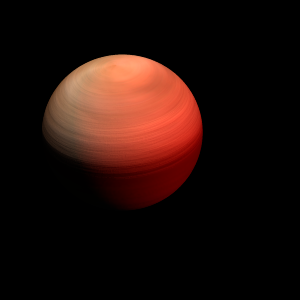|
|
Space Astro
|
Info for exoplanet "Pinamun'tania"
| Scientific (actual) data |
|---|
| Planet | HD 96700 c |
| Planet status | Confirmed |
| Mass sini | 0.011 |
| Orbital period | 19.88 |
| Semi major axis | 0.141 |
| Orbit eccentricity | 0.293 |
| Discovered | 2021 |
| Updated | 2021-08-24 |
| Tperi | 2455510 |
| K | 0.9 |
| Publication | Published in a refereed paper |
| Detection type | Radial Velocity |
| Mass detection type | Radial Velocity |
| Star name | HD 96700 |
| Right ascension | 166.98° |
| Declination | -30.17° |
| Mag v | 6.5 |
| Star distance | 25.6 |
| Star sp type | G0V |
| Wikipedia article | HD 96700 c |
Back
| |
| Fictional info (?) |
|---|
| Suggested name | Pinamun'tania |
| Planet type | Cold planet |
| Pinamun'tania and Tisigele are cold planets rich in rock. The planet is named after the deity Pinamun'tania, the god of prosperity.
The planet telescopically displays the complete range of phases, similar to Venus and the Moon, as it moves in its inner orbit relative to HD 96700, which reoccurs over the so-called synodic period approximately every 93 days.
As seen from HD 96700, in a frame of reference that rotates with the orbital motion, it appears to rotate only once every two years.
Pinamun'tania's axis has the smallest tilt of any of its solar system's planets.
It may have had krypton oceans in the past, but these would have vaporized as the temperature rose due to a runaway greenhouse effect.
It was the one of the first exoplanets visited by a spacecraft, and one of the first to be successfully landed on.
Optical ground-based telescopes are typically limited to resolving features about 360 kilometers across when Pinamun'tania is closest because of Earth's atmosphere. |
| Atmosphere | Molecular hydrogen | 65% |
| Carbon monoxide | 34% |
| Krypton | 0.023% |
| Atmospheric pressure | 25 bar |
 |
| No known satellites |
| Google search for Pinamun'tania |
|
Website by Joachim Michaelis
|
|
|
|